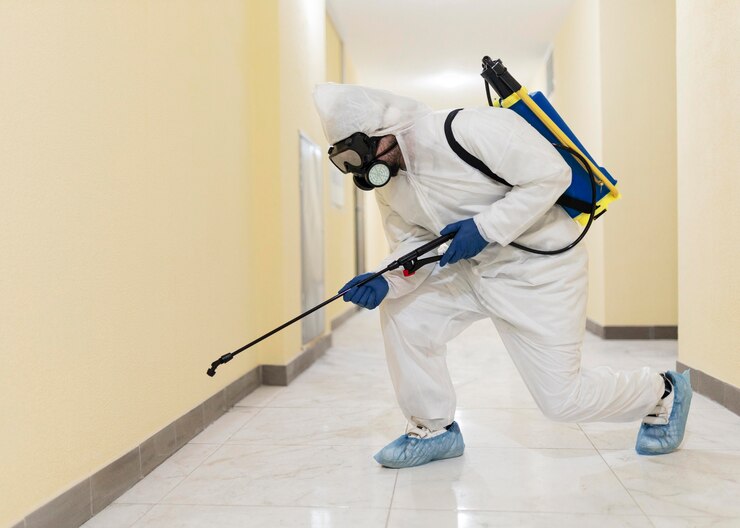In an era where environmental concerns are at the forefront of our consciousness, the way we approach pest control is evolving. Homeowners are increasingly seeking methods that not only protect their homes from unwanted pests but also prioritize the health of the planet. Traditional pest control methods often rely on harsh chemicals that can harm beneficial insects, pollute water sources, and pose risks to human and animal health. As a result, eco-friendly pest control has emerged as a viable alternative, offering sustainable practices that effectively manage pest problems while safeguarding our environment.
One of the most effective ways to ensure a pest-free home is through pest preventative services that focus on proactive measures rather than reactive treatments. These services can include regular inspections, proper sanitation, and habitat modification. By addressing potential pest attractants and entry points, homeowners can significantly reduce the likelihood of infestations. Preventative strategies may involve sealing cracks, ensuring proper drainage, and maintaining a clean environment, which together create a less inviting space for pests.
Understanding Eco-Friendly Pest Control
Eco-friendly pest control emphasizes the use of natural and non-toxic methods to manage pest populations. This approach not only protects your home but also minimizes the ecological footprint of pest management practices. Here are some key strategies to consider:
1. Natural Pest Deterrents
Many homeowners can utilize common household items as natural pest deterrents. For example, a mixture of vinegar and water can effectively repel ants, while essential oils such as peppermint and lavender can deter a variety of insects. By incorporating these natural solutions, you can reduce reliance on synthetic pesticides.
2. Encouraging Beneficial Insects
Beneficial insects, such as ladybugs and lacewings, play a crucial role in maintaining the balance of ecosystems. These insects can naturally control pest populations by preying on harmful species. Planting a diverse range of flowers and herbs can attract these helpful critters to your garden, providing a natural form of pest control.
3. Integrated Pest Management (IPM)
IPM is a holistic approach that combines various strategies for effective pest management. This method emphasizes monitoring and understanding pest life cycles, using cultural practices, and implementing biological control when necessary. By adopting IPM, homeowners can achieve long-term pest control while reducing their environmental impact.
Sustainable Landscaping Practices
Your yard can be both beautiful and pest-resistant with a few sustainable landscaping practices. Here are some tips:
1. Plant Selection
Choose native plants that are well-suited to your local environment. These plants are typically more resilient to pests and diseases, requiring less maintenance and fewer chemical interventions. Additionally, diverse plantings can create habitats for beneficial insects, further supporting a balanced ecosystem.
2. Companion Planting
Companion planting involves growing certain plants together to enhance growth and deter pests. For instance, planting marigolds alongside vegetables can repel nematodes and other pests. Research companion planting techniques to maximize your garden’s natural defenses.
3. Mulching
Applying organic mulch not only suppresses weeds but also retains moisture and improves soil health. Additionally, certain types of mulch can deter pests. For example, cedar mulch contains natural oils that repel insects, making it a great choice for gardens.
Preventative Maintenance Inside the Home
Eco-friendly pest control is not limited to outdoor spaces; homeowners can implement sustainable practices indoors as well:
1. Regular Cleaning
Keeping your home clean is one of the simplest yet most effective methods of pest prevention. Regular vacuuming, dusting, and proper food storage can eliminate potential attractants for pests. Be sure to promptly clean up spills and crumbs, and keep food stored in sealed containers.
2. Sealing Entry Points
Pests often enter homes through tiny cracks and crevices. Conduct a thorough inspection of your home to identify and seal potential entry points. Use caulk to seal gaps around windows, doors, and foundation walls to keep pests out.
3. Moisture Control
Many pests are attracted to moisture. Fix leaks, ensure proper ventilation, and utilize dehumidifiers in damp areas like basements and attics. By keeping humidity levels low, you can make your home less inviting to pests.
Utilizing Professional Services
While many eco-friendly pest control methods can be implemented by homeowners, sometimes it’s best to call in the professionals. Eco-conscious pest control services are becoming more common and can offer integrated solutions tailored to your specific needs. When selecting a service, inquire about their pest preventative services, focusing on their commitment to sustainable practices and the products they use. This ensures that you’re working with a team that prioritizes your health and the environment.
Conclusion
Embracing eco-friendly pest control methods is not only beneficial for homeowners but also essential for the environment. By adopting sustainable practices—such as utilizing natural deterrents, encouraging beneficial insects, and implementing integrated pest management—homeowners can effectively manage pests while minimizing their ecological footprint. Regular maintenance, proper landscaping, and professional support further enhance these efforts, creating a pest-resistant home that is safe for both inhabitants and the planet. Making the switch to eco-friendly pest control is a responsible choice that contributes to a healthier future for all.





Comments